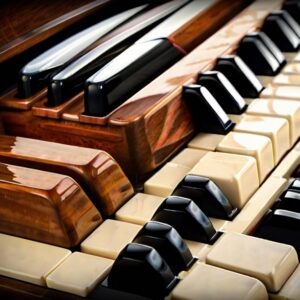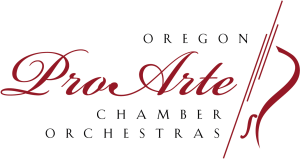The evolution of the piano is as vibrant and captivating as the melodies it creates. From its inception to the modern era, it has undergone significant changes that have influenced music passionately.
The Birth of the Piano

The piano’s story in the early th century with Bartomeo Cristofori, an Italian craftsman. Dissatisfied with the limitations of the harpsichord, which couldn’t vary the sound intensity, Cristofori sought to create an instrument that offered a greater range of expression. Around 1700, he ingeniously designed the first version of the piano, known as the “gravicembalo col piano e forte.” This name, which translates to “keyboard instrument with soft and loud,” aptly described the instrument’s groundbreaking ability to produce dynamic contrasts – a feature that was nothing short of revolutionary for that time. Unlike the harpsichord, where the strings were plucked and produced a relatively uniform sound regardless of the force applied to the keys, Cristofori’s piano utilized hammers that struck the strings. This allowed musicians to play notes with varying degrees of loudness and softness by simply adjusting the pressure applied to the keys.
Cristofori’s piano, looked quite different from modern instruments. It had a delicate mechanism that enabled players to control the volume more precisely than ever before. Despite this innovative feature, the initial reception to Cristofori’s piano was somewhat lukewarm. The early versions of the piano were met with a mixture of curiosity and skepticism. The new sound and playing technique it required were unfamiliar to musicians accustomed to the harpsichord and clavichord, which delayed its widespread acceptance. It wasn’t until several decades later, as composers and musicians gradually began to recognize and explore the piano’s unique capabilities, that the instrument’s true potential started to be embraced. Over time, as the instrument was refined and its expressive possibilities fully appreciated, the piano would go on to become one of the most beloved and widely used instruments in Western music.
Early Adoption and Modifications
As the piano made its way across Europe, various modifications and improvements enhanced its use and sound. German builders like Gottfried Silbermann refined Cristofori’s design. Silbermann pianos featured a damper mechanism, which improved note clarity and sustain. Initially praised by Johann Sebastian Bach, these changes ultimately helped reflect wider musical expressions more accurately.
During the mid-18th century, the fortepiano – a smaller, lighter predecessor of the modern instrument – became popular. Composers like Wolfgang Amadeus Mozart preferred this version, incorporating it into their compositions. Mozart’s piano concertos and sonatas showcased its potential, highlighting the nuance and dynamism missing in earlier keyboard instruments.
The Romantic Era Transformations
The transition to the 19th century ushered in the Romantic era, a period yearning for expansive emotional expression and dramatic intensity in music. Entering this new phase, the piano continued to transform. English piano makers, Broadwood and Sons, began producing larger, more robust instruments. They featured extended ranges, iron frames replacing wooden ones, and thicker strings, contributing to a richer, fuller sound.
Ludwig van Beethoven, an important figure linking the Classical and Romantic eras, significantly impacted piano composition. His works demanded more from the instrument—greater resonance, structural integrity, and dynamic range. Piano manufacturers responded by evolving the instrument to meet these demands. Beethoven’s later works, such as the mighty “Hammerklavier” Sonata, reflect a profound partnership between the expanding piano capabilities and his visionary genius.
The Rise of Virtuosos and Technological Innovations
The 19th century witnessed the rise of piano virtuosos, composers recognized not just for their writing but their performing prowess. Franz Liszt and Frédéric Chopin famously pushed the instrument to its technical and expressive limits. To support these demanding compositions, piano construction had to adapt continuously.
One of the advancements during Liszt’s time was the introduction of the doubly escapement action by Sébastien Érard. This innovation allowed rapid note repetition and greater control over dynamics, benefiting both novice students and virtuous levels of performance.
The Industrial Revolution provided piano manufacturers with advanced materials and manufacturing techniques. American piano maker Steinway & Sons, established in 1853, introduced key innovations like the overstrung scale and cast-iron frame, producing unparalleled tone quality and durability. These advancements eventually defined the modern grand piano.
The Late Romantic and Impressionistic Periods
By the end of the 19th century, the piano was arguably at its peak regarding design and popularity. The growth of piano ownership boomed, symbolizing cultural sophistication and economic prosperity.
During this period, composers like Johannes Brahms and Pyotr Ilyich Tchaikovsky continued exploring the piano’s massive potential and its unique ability to convey complex emotional landscapes. Claude Debussy and Maurice Ravel, central figures of Impressionism, pushed the boundaries even further. Their compositions evoked atmospheric textures and delicate nuances, achievable through advanced pedal techniques and refined touch. The piano had become an instrument of power and grandiosity and a medium for delicate, intricate soundscapes.
The Transition to the 20th Century and Beyond
The 20th century opened avenues for even more experimentation and diversity in piano music. Composers like Sergei Rachmaninoff and Igor Stravinsky viewed the piano as a canvas for their creative expressions, blending traditional European forms with modern influences. The piano itself saw new, avant-garde modifications.
The influence of jazz and blues redefined piano music in fundamental ways. Pianists like Duke Ellington and Thelonious Monk introduced techniques and sounds that classical composers hadn’t considered, blending syncopation and improvisation into the mix. This cross-pollination of jazz and classical traditions enriched the piano repertoire, bridging gaps between distinct musical worlds.
Electronic and Digital Transformations
As technology advanced, so did the piano. The electronic piano, and subsequently the digital piano, emerged as practical alternatives for musicians. These instruments offered portability and versatility, enabling them to create a wide array of sounds from classical timbres to contemporary synthetic tones.
MIDI (Musical Instrument Digital Interface) technology connected pianos to computers, revolutionizing composition and recording. These innovations brought new dimensions to orchestration and accessibility, allowing emerging composers to explore and innovate without the constraints of traditional acoustic pianos.
The Contemporary Piano and Its Legacy
Today, the piano stands as a symbol of musical tradition and innovation. Artists like Lang Lang and Yuja Wang exhibit unparalleled technique and interpretative depth, keeping the classical piano repertoire vibrant and alive. Concurrently, modern composers and indie artists incorporate electronic and digital pianos into their works, reflecting the ongoing evolution and relevance of this timeless instrument.
Concert halls worldwide echo with piano music, from Baroque to contemporary compositions, reminding us of the instrument’s storied past and its promising future. In education, the piano remains fundamental, teaching musical theory, technique, and expression to generations of musicians.
The piano’s development in classical music is a testament to human ingenuity and creativity. From Cristofori’s initial invention to the high-tech iterations gracing stages today, the journey of the piano reflects an ever-evolving landscape of musical innovation and expression.
